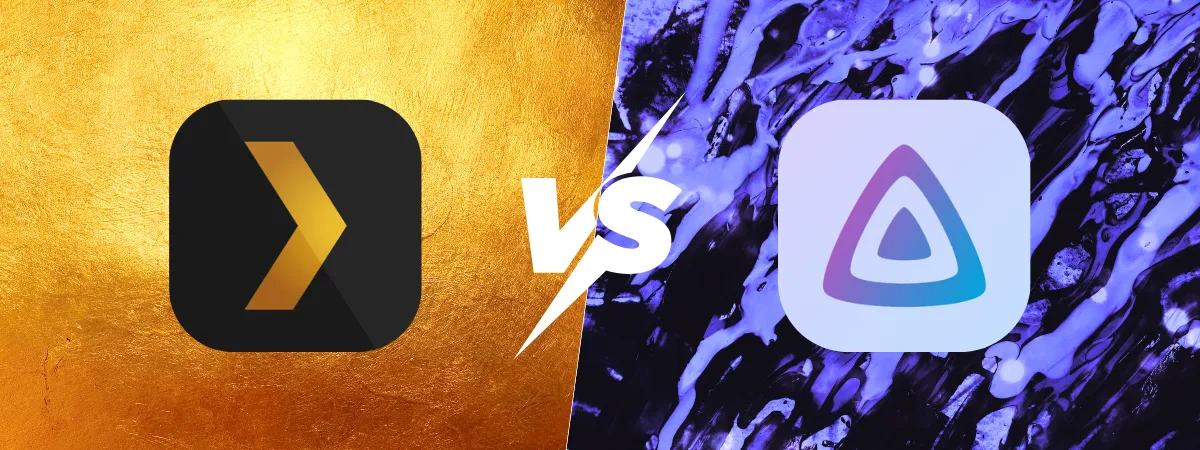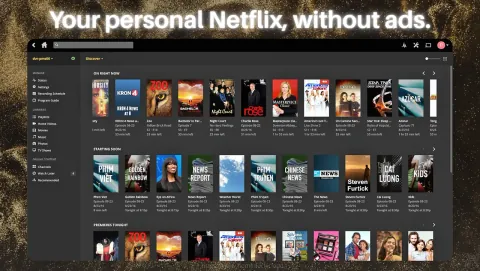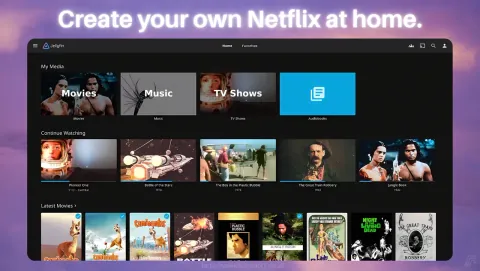Plex vs Jellyfin: Which Media Server is the Best in 2026?
Complete comparison between Plex and Jellyfin media servers. Discover which self-hosted streaming platform is right for you: features, costs and pricacy tested

If you’re still juggling Netflix, Disney+, Prime Video, and whatever other streaming services you forgot you’re paying for, you know the frustration. You spend more time searching for what to watch than actually watching. And somehow, the one movie you want is always on the service you don’t have.
The solution? Build your own media server. Take back control of your content, watch anything on any device, and stop worrying about licensing deals removing your favorite shows overnight. The two main players in self-hosted streaming are Plex and Jellyfin, and honestly, choosing between them comes down to what you value most.
We’ve been running both for months now, testing with real libraries, multiple users, and different hardware setups.
The Fundamental Difference
Plex is the polished, commercial option with a free tier and optional paid features. Think of it like Apple’s approach to software: beautiful interface, seamless experience, but some nice-to-haves cost extra. The catch is that Plex authenticates through their cloud servers, so you need internet just to log into your own local server. Some people don’t mind, others hate the dependency.
Jellyfin is completely open-source and free forever. No premium tiers, no paywalls, no phone-home authentication. It’s truly self-hosted and works perfectly even when your internet is down. The tradeoff? Less polish and more manual configuration.
Neither is objectively better. It depends on whether you prioritize convenience or complete control.
Getting Started
Setting up Plex is stupidly easy. Create an account, download the server, and follow the wizard. It automatically fetches movie posters, descriptions, ratings, and organizes everything nicely. You’re streaming in about 15 minutes. On HomeDock OS it’s even faster, just one click from the App Store and you’re done.
Jellyfin takes a bit more effort. Download, install, configure through their web interface. No account needed, no cloud authentication, no external dependencies. Setup takes maybe 20-30 minutes if you’re doing it manually, but on HomeDock OS it’s the same one-click install as Plex.
User Experience
Plex looks and feels like a premium streaming service because that’s what it is. The interface is gorgeous with smooth animations, thoughtful design, and intuitive navigation. The Apple TV app genuinely rivals Netflix in polish. Mobile apps are snappy. Everything just works the way you’d expect.
The best part? Your non-technical family members will figure it out immediately. If your parents can use Netflix, they can use Plex. No questions asked.
Jellyfin is clean and functional but lacks the visual wow factor. It gets the job done without the polish. Navigation works fine, but animations feel less refined. The web interface is solid, mobile apps are good, but some TV apps feel like they’re still catching up. For technical users it’s perfectly fine. For your less tech-savvy relatives, expect a few more “how do I” questions.
How They Actually Perform
Both platforms automatically grab metadata and organize your library nicely. We tested with 500+ movies and about 50 TV shows. Plex correctly identified 98% of everything automatically, while Jellyfin got about 95% right. The missing 5% needed manual matching, which wasn’t hard but took some time. Both look great once configured.
Transcoding is where things get interesting. When your device can’t play the original file format, the server has to convert it on the fly. Plex handles this really well with hardware acceleration working out of the box. We streamed 4K content down to 1080p for remote viewing without issues. The catch? Hardware transcoding requires Plex Pass, their paid subscription at $5/month or $120 lifetime. Without it, you’re stuck with CPU-only transcoding which is painfully slow.
Jellyfin’s transcoding has improved a ton but still occasionally hiccups with complex formats. Hardware acceleration works but needs more manual setup. The huge advantage? It’s completely free. No subscription needed for any feature.
Remote access is where Plex really shines. Flip one toggle and you’re streaming from anywhere. Share with friends by sending an invite, they log in with their Plex account, done. Port forwarding happens automatically in most cases.
Jellyfin requires you to manually configure port forwarding or set up a reverse proxy. Not hard if you’re technical, but definitely intimidating for beginners. Your friends also need to remember your server address instead of just logging into an app.

The Privacy Question
Here’s where things get controversial. Plex authenticates through their cloud servers and collects analytics. Your viewing data passes through their infrastructure. They say they don’t sell it, and their privacy policy seems reasonable, but the data exists on their servers regardless. You can limit collection in settings but can’t eliminate it without breaking stuff. If Plex’s servers go down, even accessing your local content becomes a problem.
For most people, this isn’t a dealbreaker. The convenience is worth it. But if you’re serious about privacy, this is a non-starter.
Jellyfin never phones home. Zero telemetry, zero external authentication, zero cloud dependencies. Your viewing habits stay on your hardware, period. When your internet dies, Jellyfin keeps working perfectly on your local network. No external service can ever lock you out of your own content. If privacy matters to you, Jellyfin is the only real choice.
What About Cost?
Plex is free for basic use: unlimited streaming, all the apps, remote access, CPU-only transcoding. It works great for most people. Plex Pass costs $5/month or $120 lifetime and unlocks hardware transcoding, mobile sync, premium music features, and a skip intro button. If you’re transcoding a lot or really care about music, it’s worth it.
Jellyfin costs nothing. Ever. Everything is free. Hardware transcoding, mobile sync, live TV, DVR, all of it. No tiers, no paywalls, no premium features. The cost is your time spent configuring and troubleshooting when things don’t work perfectly.
Performance
We tested both on an Intel i5-9400 with 16GB RAM and no dedicated GPU. At idle, both use about 150MB RAM and barely touch the CPU. While streaming without transcoding, they’re basically identical. When transcoding 4K down to 1080p on CPU-only, both struggle hard and max out the processor. Plex is slightly more efficient, but honestly both need a GPU for serious transcoding work.
Client apps? Plex has native apps everywhere: iOS, Android, Apple TV, Roku, Fire TV, smart TVs, game consoles. They’re all consistently excellent. Jellyfin has apps for most platforms but they vary in quality. The web interface is great, mobile apps are good, some TV apps feel rougher around the edges.
Music streaming? Plex absolutely dominates with intelligent playlists, sonic analysis, and gorgeous presentation. Jellyfin handles music fine but it’s clearly an afterthought. Photos are similar, both handle them but neither is replacing Google Photos anytime soon.
So Which One Should You Pick?
Honestly, it depends on what you value.
Go with Plex if you want the smoothest possible experience, you’re sharing with non-technical family, remote access needs to just work, and you don’t mind paying for premium features. The apps are excellent everywhere, setup is dead simple, and your relatives won’t call you asking how to use it.
Pick Jellyfin if privacy is non-negotiable, you want everything free forever, you’re comfortable with some technical configuration, and you value complete control over your data. It’s truly self-hosted with zero cloud dependencies.
Our take? Most people should start with Plex. It’s easier, the family will actually use it, and you’re streaming in minutes instead of hours. If you later decide the cloud authentication bothers you or you hit a paywall that annoys you, switching to Jellyfin is painless.
If you’re technical and privacy-conscious from the start, go straight to Jellyfin. You won’t miss what you never had, and you’ll love the complete freedom.
The best answer? Install both on HomeDock OS and decide for yourself. Both are one-click installs from our App Store. Point them at the same media folders, test for a week, pick your favorite.
Actually Getting Started
On HomeDock OS, installing either is stupidly simple. Download HomeDock OS, open the App Store, search for Plex or Jellyfin, click install, wait three minutes. Done. Access your media server from any browser. No Docker commands, no terminal, no config files. Just click and stream.
Want to test both? Install both and see which one you prefer. That’s the beauty of self-hosting, you’re not locked into anyone’s ecosystem.
You can start small with a Raspberry Pi 4 or 5 with 8GB RAM for under $100. It handles personal streaming great and lets you experiment risk-free. When you need more power, move to dedicated hardware with a proper GPU for transcoding. Or skip the hardware hassle entirely and use HomeDock OS Cloud Instances starting at 9.95€/month.
The point isn’t which platform you choose. The point is that you’re taking back control of your media. No more hunting across five streaming services for one movie. No more losing access when licensing expires. No more $100/month subscriptions for content you barely watch.
HomeDock OS
Your media, your terms, forever.
Image Gallery

Related Links

